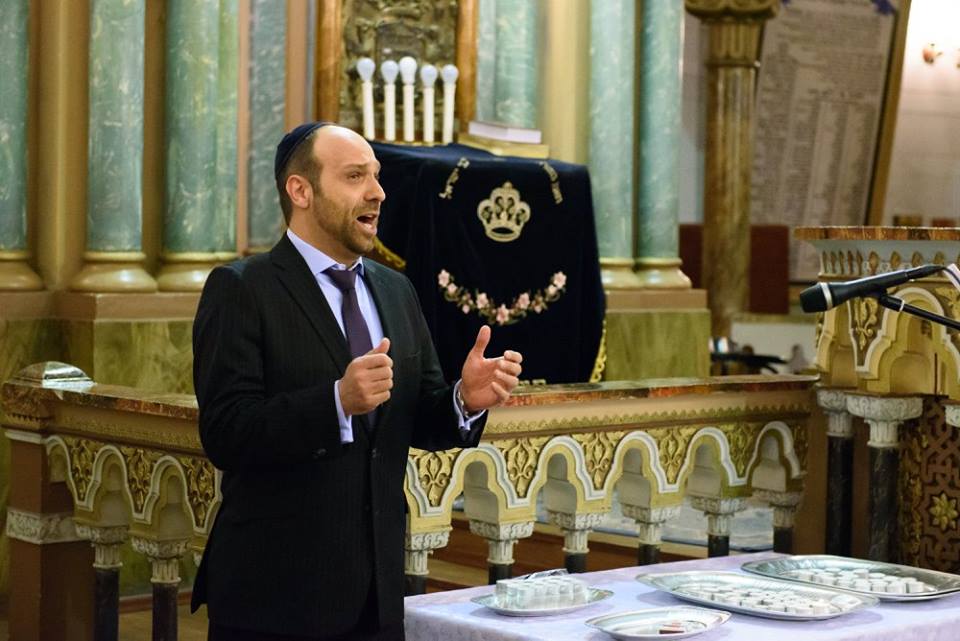
The Lithuanian Jewish Community marked International Holocaust Remembrance Day January 26 at the Choral Synagogue where Rabbi Samuel de Beck Spitzer from Great Britain performed the El malei Rakhamim prayer.
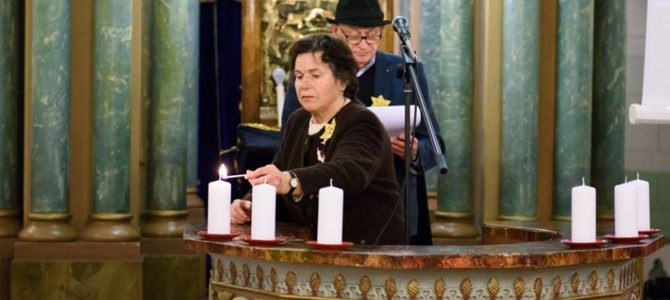
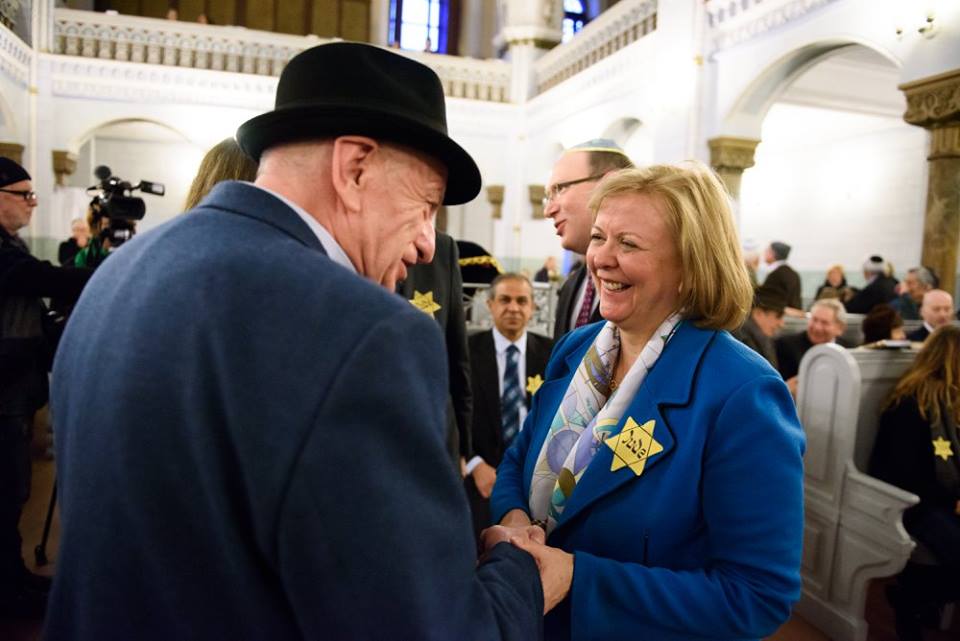
More photos here.

The Lithuanian Jewish Community marked International Holocaust Remembrance Day January 26 at the Choral Synagogue where Rabbi Samuel de Beck Spitzer from Great Britain performed the El malei Rakhamim prayer.


More photos here.

LJC members and members of the public attended a meeting with professor Antony Polonsky, whose book on Jewish history in Lithuania, Poland and Russia has been translated to Lithuania. Professor Šarūnas Liekis moderated the discussion.
The Brandeis professor is one of the most authoritative scholars of Eastern European Jewish history. His new book Jews in Poland and Russia provides an exhaustive view of the historical, political and cultural evolution of Jewish communities in these countries. Litvaks haven’t been left out, of course, and form a major part of the book.
In the 18th century the Polish-Lithuanian Jewish community was the largest in the world. The author elected not to look at Jewish history through the prisms of conflict and suffering, but instead to seek out the different principles by which the communities organized Jewish life and life with other communities.
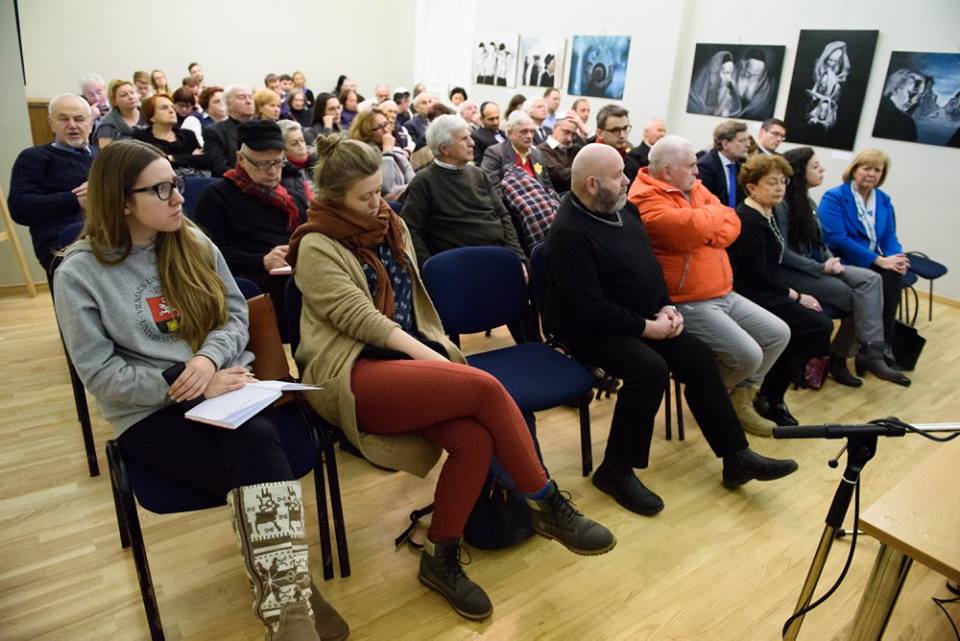
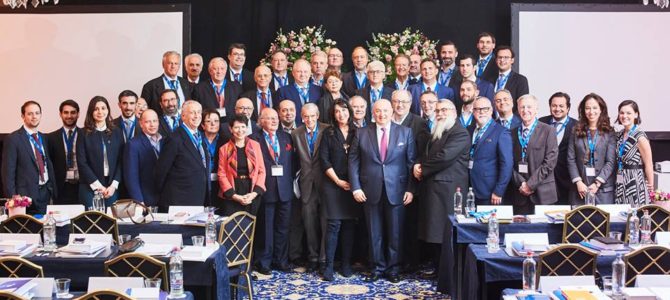
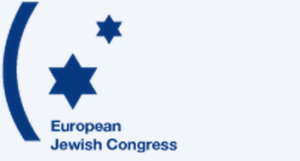
The assembly of the European Jewish Congress and a ceremony to mark International Holocaust Remembrance Day were held in Brussels. Lithuanian Jewish Community chairwoman and the heads of other European Jewish communities participated at the events.
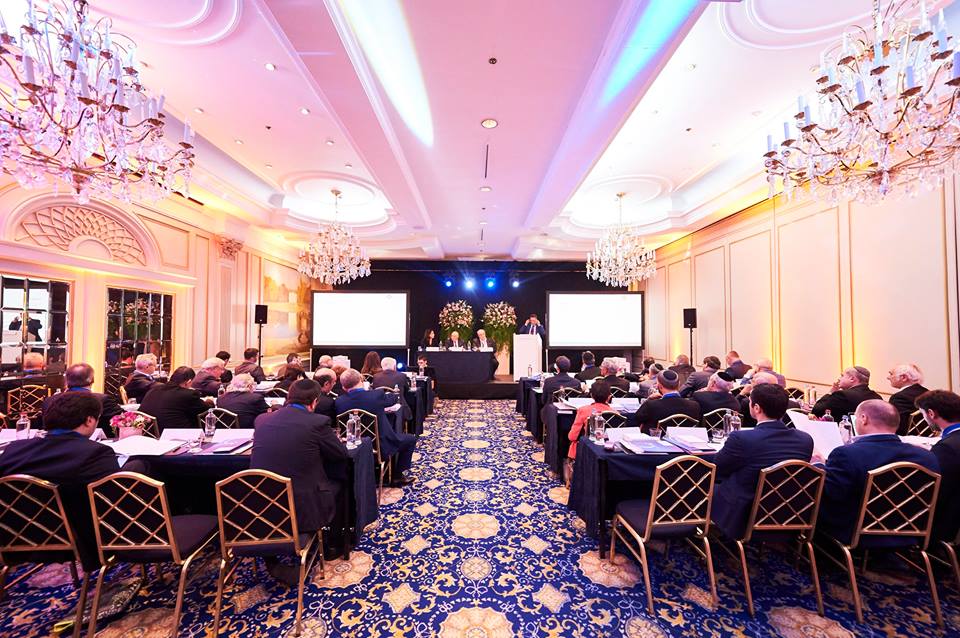
More photos here.
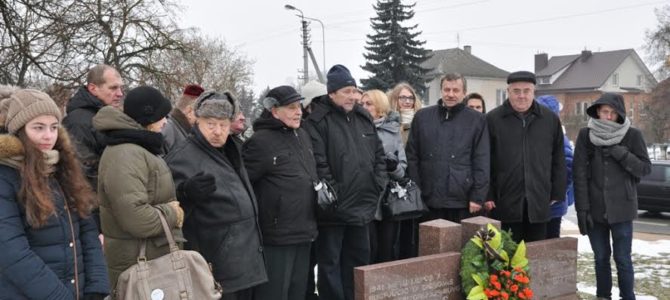
On November 1, 2005, the United Nations General Assembly adopted a resolution and called upon the world to mark January 27 every year as International Holocaust Remembrance Day. On that day in 1945 as World War II was still going on the prisoners of the Auschwitz concentration camp were liberated. This was the largest Nazi death camp where about 1.5 million people including the elderly and children were murdered, of whom about 1 million were Jews.
Lithuanian is a member of the International Holocaust Remembrance Alliance which actively participates in international programs to combat anti-Semitism. In 1941 Nazi Germany occupied Lithuania and over a few months the majority of the Lithuanian Jewish community had been murdered. Some Lithuanian Jews were sent as labor to ghettos set up in the cities. The Panevėžys ghetto was liquidated on August 17, 1941. About 13,500 Jews were shot. Studies by the International Commission show 200,000 Jews were exterminated. There are more than 200 mass murder sites in Lithuania, and about the same number of old Jewish cemeteries.
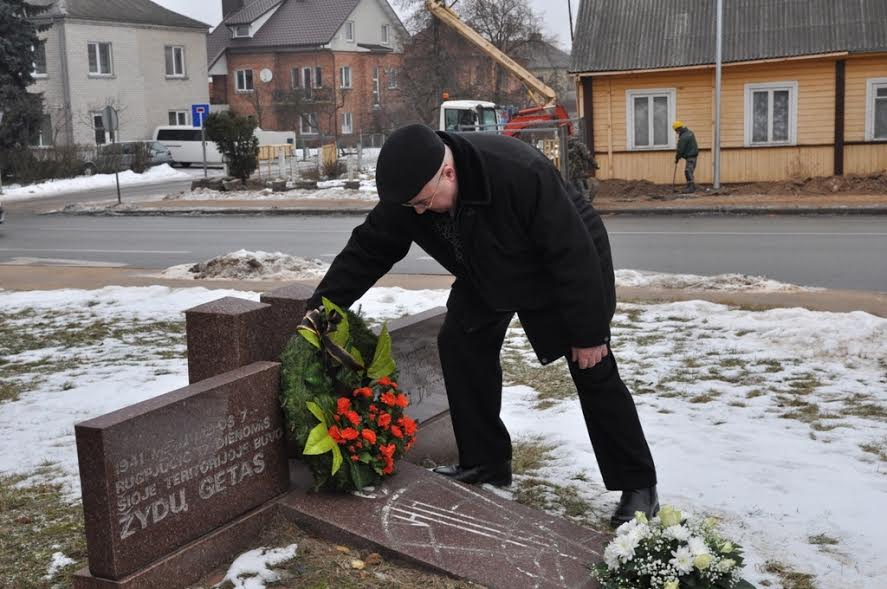
The date was marked on January 26 at the Sad Mother statue in Memory Square in the Jewish cemetery in Panevėžys. Participating were Panevėžys mayor Rytis Mykolas Račkauskas, Panevėžys city council member Alfonsas Petrauskas, teachers and students from the Margarita Rimkevičaitė Services and Business School and the J. Miltinis Gymnasium, members of the Panevėžys Jewish Community and city residents. Mayor Račkauskas spoke and laid a wreath, and city council member Petrauskas also spoke. Panevėžys Jewish Community chairman Gennady Kofman recalled the horrible facts of Jewish extermination, Lithuanian-Jewish cooperation and mutual aid, and thanked Lithuanians who rescued Jews. He laid a wreath before the memorial. Jewish calendars from the LJC and stars of David paid for by Panevėžys Jewish Community member Jurij Grafman were passed out to participants. Wreathes and flowers were also laid at the Ghetto Gates monument. A documentary film about the Auschwitz-Birkenau camp was screened at the Panevėžys Jewish Community, a conference was held and there was discussion on the facts in the cases of heroic rescuers of Jews.
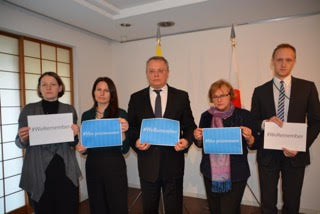
The diplomats and staff of the Lithuanian embassy to Japan mourn with you and hope the example set by Chiune Sugihara, Righteous Gentiles and all rescuers of Jews will lead to efforts to make sure it never happens again
Violeta Gaižauskaitė
plenipotentiary minister
Lithuanian embassy in Japan

January 27 has been marked as an official day to commemorate Nazi victims since 1996. On this occasion the film “Karl Jäger und Wir – die langen Schatten des Holocaust in Litauen” [Karl Jäger and Us: The Long Shadow of the Holocaust in Lithuania], a multi-generational project, is to be screened in Waldkirch, Germany. A monument commemorating the Jews murdered in Lithuanian and Holocaust victims from 1941 and 1942 is also to be unveiled there on January 29.
The City of Waldkirch, the “Waldkirch in the Nazi Period” workshop and the Catholic pastoral care unit in Waldkirch are to unveil the new memorial on January 29. The public is invited to attend the unveiling.
The “Waldkirch in the Nazi Period” workshop initiated the idea for the memorial in October of 2011 and it was approved by city council in 2015. It will be located by the Church of St. Margarethen and the Elztal Museum. The opening begins at 6:00 P.M. at the museum and will feature Mike Schweizer accompanied on saxophone.
The second part of the event is scheduled to take place in the church and will feature Katharina Müther, who is renowned for Yiddish, Sephardic, Sinti and Roma songs from Eastern Europe. German MP Gernot Erler, who served as state minister in the foreign ministry from 2005 to 2009, will deliver a speech, as will historian Dr. Wolfram Wette and pastor Heinz Vogel, with possible discussion and reflection afterwards.
The film “Karl Jäger und Wir – die langen Schatten des Holocaust in Litauen” is to be screened at the church at 8:00 P.M. The film is the fruit of a multigenerational project by Black Dog eV.
Representatives of the Lithuanian Jewish Community plan to attend the commemoration which has caused some surprise in Lithuania. It’s important to note Karl Jäger lived in Waldkirch as a young man, although he was born in Schaffhausen, Switzerland. Jäger, an SS colonel, was the main force behind the Holocaust in Lithuania. His report, known in Holocaust studies as the Jäger Report, is a detailed account of Nazi mass murder operations against Jews in Lithuania, listing mass murders by date and location and breaking down the number of victims in the categories of males, females and sometimes children.
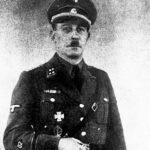
After the war Jäger evaded capture by the Allies using a false identity. He worked as a farm hand until his report was discovered in March of 1959. Jäger committed suicide in Hohenasperg prison near Stuttgart in the German state of Baden-Württemberg awaiting trial in June of 1959. The Soviet Union only released the Jäger Report to West Germany investigators in 1963 during the trial of Hans Globke in East Germany.
The Jäger Report is one of the primary documents witnessing to the scope of the Holocaust in Lithuania. The Jäger Report details the murder of 47,326 men, 55,556 woem and 34,464 children in Lithuania, for a total of 137,346 Lithuanian Jews murdered in the first months of the Nazi occupation of Lithuania in the summer and fall of 1941.
Full story in German here.
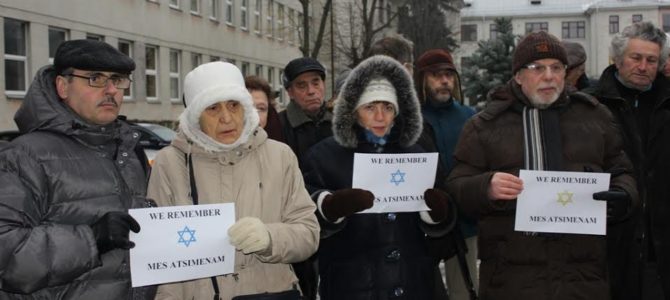
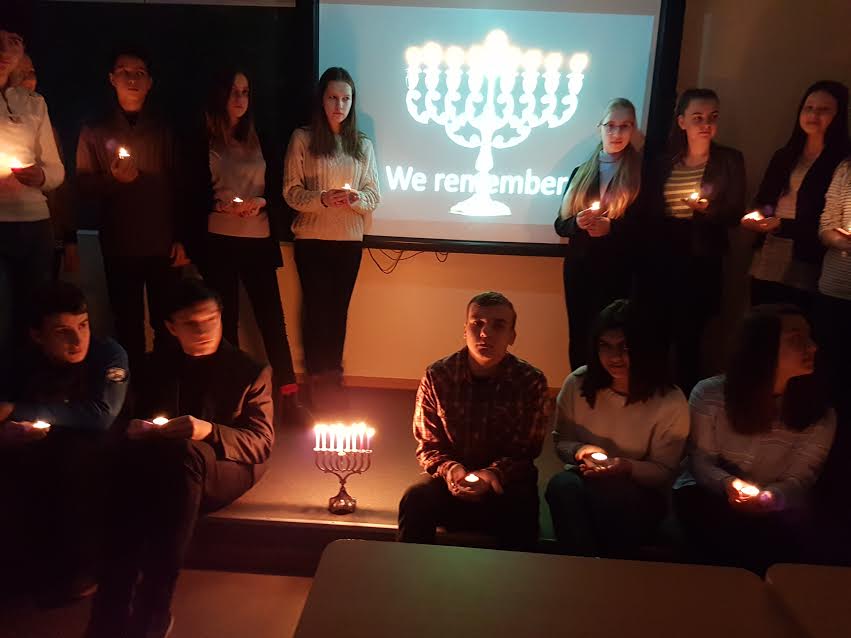
The Kaunas Jewish Community honored the memory of victims and took part in the international We Remember campaign on the eve of International Holocaust Day.
Photos: Members of the Kaunas Jewish Community, local residents in solidarity, students from the A. Puškinas and S. Darius and S. Girėnas gymnasia, whose students marked International Holocaust Remembrance Day on January 27, educational assistant Audronė Zamalienė (standing in final photograph with M. Duškesas).

Press Release
January 24, 2017
Ahead of International Holocaust Remembrance Day on January 27:
Thousands of We Remember photos to be projected at Auschwitz-Birkenau as World Jewish Congress campaign reaches millions world-wide
AUSCHWITZ-BIRKENAU – Thousands of photos of people holding “We remember” and “I remember” signs in honor of the victims of the Holocaust are on display on a giant screen at the former Nazi German death camp Auschwitz-Birkenau from January 24 to 26, 2017, ahead of International Holocaust Remembrance Day this Friday. The display next to the International Monument at Birkenau is part of a global social media campaign conceived and run by the World Jewish Congress whose aim is to raise awareness of the Holocaust.
More than 100,000 people from every continent have already taken part in the WJC’s campaign which calls on participants to post their photos to facebook, twitter and other social media sites along with the hashtag #WeRemember.
“The goal is to reach those who don’t know much about the Holocaust, or who might be susceptible to those who deny it, and to remind the world that such horrors could happen again. Using the tools of social media we hope to engage the next generation, because, soon, it will be their responsibility to tell the story and ensure that humanity never forget.
“Auschwitz-Birkenau was the Nazis’ biggest killing site and is the best-known symbol for the Shoah world-wide.
“We thank the Auschwitz-Birkenau Memorial and Museum for allowing the screening on the grounds of the former death camp, and for supporting our campaign,” said World Jewish Congress CEO Robert Singer.
A live stream of the screening is to be made available at the following link: https://www.facebook.com/WorldJewishCong/videos/vb.130945114804/10154953773549805/?type=2&theater¬if_t=live_video_explicit¬if_id=1485262793563023
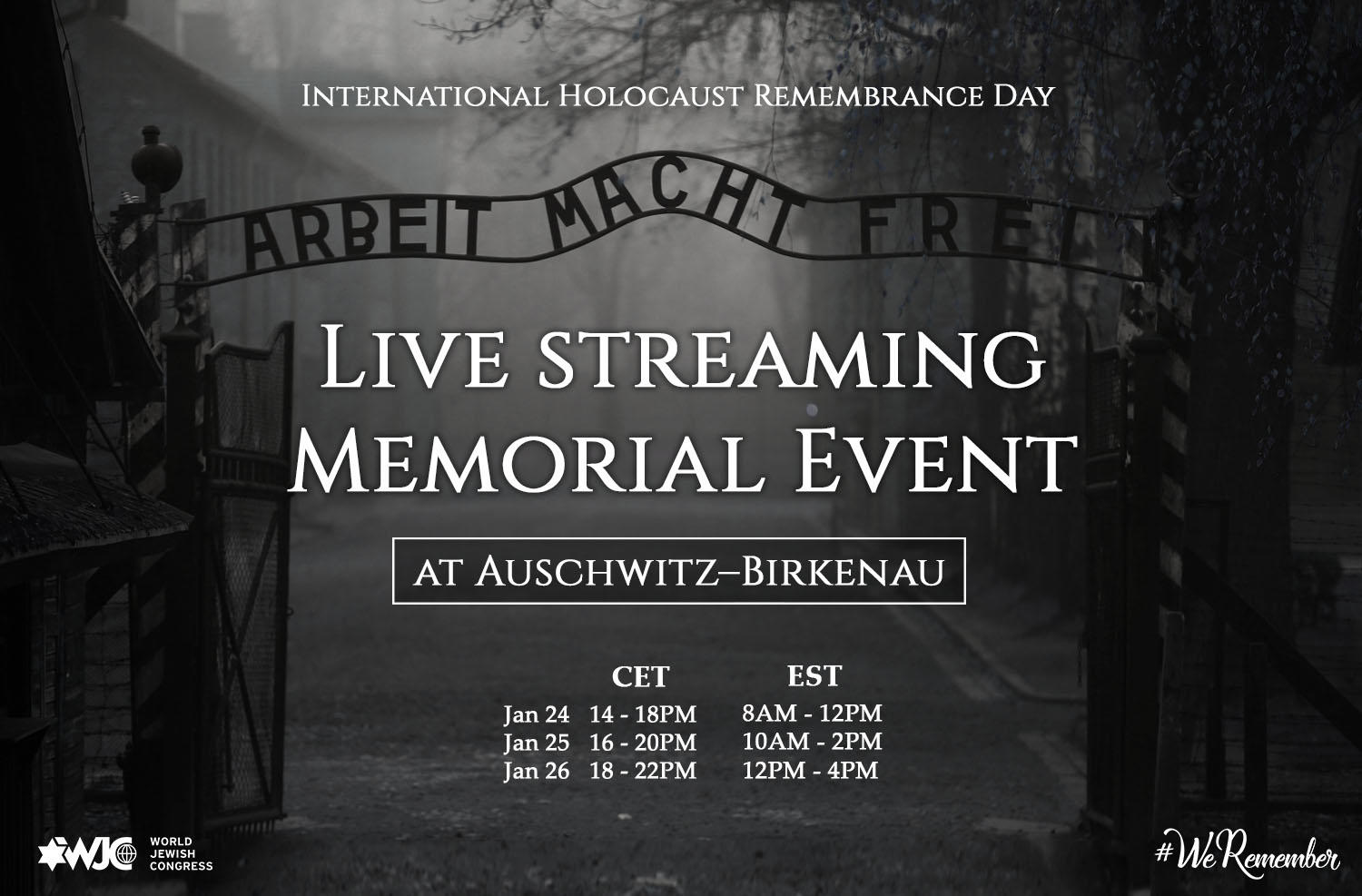
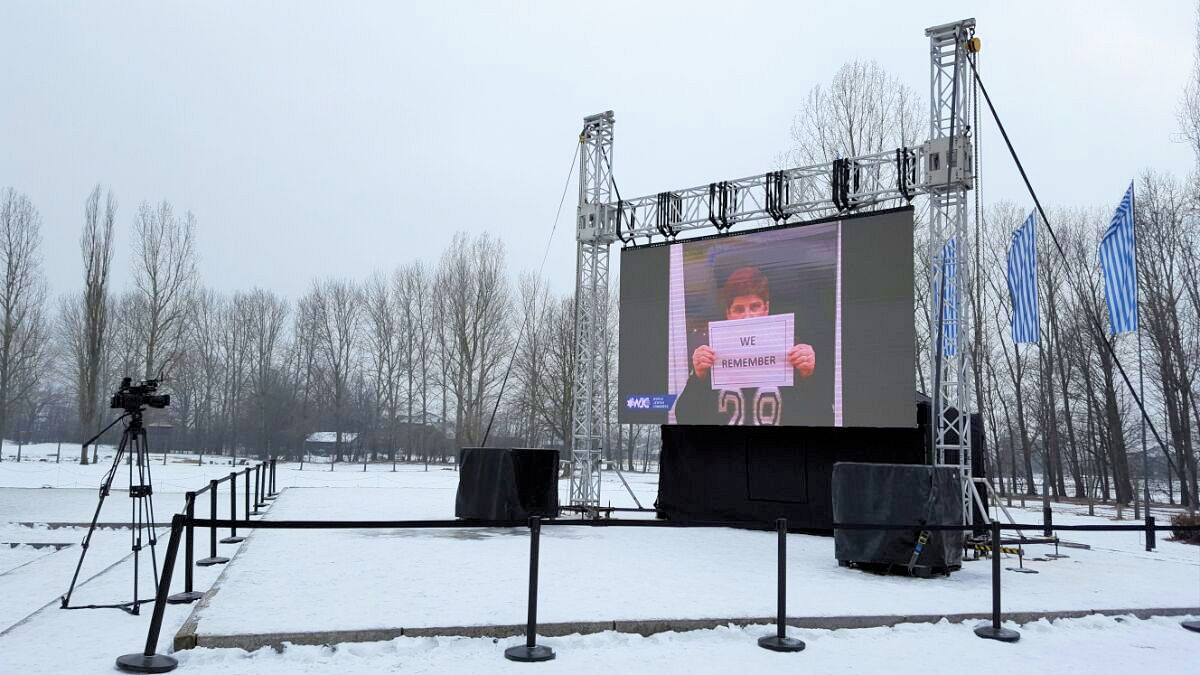
Photo of the installation

Unless specifically asked tour guides don’t mention gas chamber/crematorium (Krema I) is a reproduction. Photo courtesy Tom Tillett
by Tom Tillett
Menachem Rosensaft once wrote: “As much as any other event, if not more so, the Holocaust requires the chronicler to be scrupulously accurate.” He further notes: “The greater the popularity of this subject, the greater the need for vigilance regarding the treatment it is accorded.” As we approach International Holocaust Remembrance Day, we need to be vigilant.
Since my most recent visit to Auschwitz in 2015 I have been particularly concerned that while its museum often uses the term “authentic experience,” visitors are exposed to a variety of nonauthentic experiences. To provide just a few examples, the infamous Arbeit Macht Frei sign at the main gate is a reproduction; the Auschwitz I footprint actually extended into the current main parking lot and beyond; the gas chamber/crematorium (Krema I) usually shown at the end of the tour is a reproduction, and in Auschwitz II–Birkenau, the line of barracks (Section BIIA) upon entering to your right have been entirely rebuilt. To be fair, the guides will acknowledge this if asked, but the pressure of mass tourism means that they are rarely asked.
I have the utmost respect for the staff at the Auschwitz-Birkenau Memorial and Museum. They have an extraordinarily difficult job where literally every decision or official comment can quickly become controversial, yet they accept the challenge with grace, commitment and passion. The staff must navigate Polish politics, a huge increase in visitors severely straining the infrastructure and financial issues, and they must reconcile various stake-holder groups, each of whom have legitimate, though often conflicting, agendas.
Full story here.
by Pawel Sawicki, Auschwitz-Birkenau State Museum
How should we define the authentic remains of the German Nazi concentration and extermination camp Auschwitz-Birkenau, which today are protected and preserved by the Auschwitz Memorial?
Should we define it as:
• 150 buildings, about 300 ruins, including those of five gas chambers and four crematoria in Birkenau that are especially important to the history of the camp.
• Over 13 kilometres of fences, and more than three thousand concrete fence posts.
• About 110,000 shoes and 3,800 suitcases of victims, 2,100 of which bear the names of their owners.
• About 39,000 negatives of registration photographs of prisoners, 48 volumes with about 70,000 of their death certificates, 248 volumes of Zentralbauleitung documents, and 13,000 letters and cards mailed from the camp by prisoners.
This is just the beginning of the list which summarizes the extent and the challenge of our Museum.
There is also another priceless part of our authentic collection: the archives, with over 30,000 pages of testimonies of survivors and eyewitnesses as well as over 45,000 pages of their memoirs. These are individual stories of people who survived, stories which can help us today to comprehend the existing architecture of the former camp through personal experiences, emotions and dilemmas.
Full story here.

Dear friends,
We are pleased to share with you this issue of our Justice Magazine (Number 58).
The timing of this issue is significant, since on January 27th we commemorate International Holocaust Remembrance Day. The articles from our Paris Conference are therefore particularly relevant .
You are also welcome to view some of the presentations from the Paris
Conference on our web: www.intjewishlawyers.org .
IAJLJ Staff
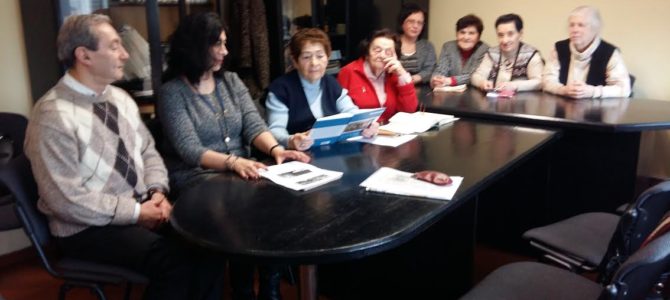
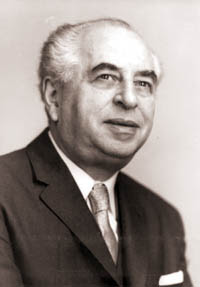
The Yiddish Club of the Kaunas Jewish Community is celebrating the 120th birthday of Litvak-American Yiddish philologist, educator and author Yudl Mark (1897-1975). Mark taught at the Vilkomir Jewish Gymnasium and was one of the founders of YIVO. He moved to the United States in 1936, and to Israel in 1970. Among his many great works stands the 12-volume Groyser verterbukh fun der yidisher shprakh (Great Dictionary of the Yiddish Language), which caused dispute with YIVO over the use of non-YIVO orthography.
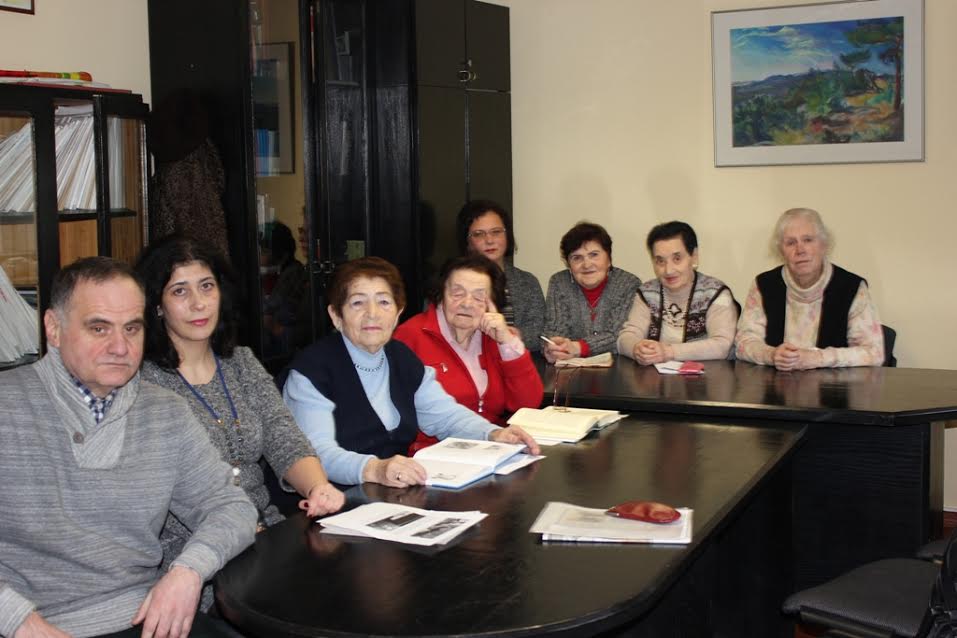
You’re invited today at 4:30 P.M. to attend a ceremony at the Choral Synagogue in Vilnius where candles will be lit in memory of the victims of the Holocaust and the El malei Rakhamim prayer will be sung. Afterwards all are invited to the Lithuanian Jewish Community at Pylimo street no. 4 in Vilnius to a discussion of Jewish history with professor Antony Polonsky, moderated by professor Šarūnas Liekis, at 6:00 P.M.
The Lithuanian Cultural Heritage Department announced they are already planning for this year’s European Day of Jewish Culture and have selected a theme, “The Diaspora and Heritage: The Shtetl.” They characterized the choice as an intentional, mature and topical one for a country where the formerly large Jewish ethnic and religious minority thrived until the 1940s in shtetls.
They explained the word “shtetl” means small town in Yiddish. “When the Jerusalem Temple was destroyed in 70 C.E., Jews spread throughout the world, starting a new stage in the existence of the people, life in the Diaspora. Jews who settled in the Grand Duchy of Lithuania from the latter half of the 14th century and their descendants are called Litvaks. They are a branch of the Ashkenazi, Jews fleeing persecution in the German lands in the Middle Ages,” the department noted in a press release.
They continue: “It’s possible the origins of the shtetls reach back to the 18th century, but one shouldn’t get the mistaken impression that every historical Lithuanian Grand Duchy or Lithuanian town may be called a shtetl. Not so! Only a town where Litvaks comprised up to half, and often more, of the population and where the spirit of Litvak enterprise and intellectual ferment was felt can be called a shtetl without reservations.”
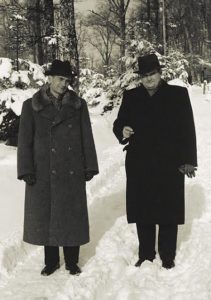
To mark International Holocaust Remembrance Day, the Vilna Gaon State Jewish Museum in Vilnius is screening two biographical films and opening a new exhibit about a remarkable friendship between a Pole and Hungarian which ended up saving thousands of lives. The events are open to the public at the museum’s Tolerance Center located at Naugarduko street no. 10/2, Vilnius.
On January 26 the museum debuts its exhibition called Sławik and Antall: The Great Rescuers. Heroes of Three Nations: Poles, Hungarians and Jews and screens the film Life on the Edge. Henryk Sławik, József Antall’s Senior (2014) with the film’s director Grzegorz Łubczyk participating. The film is being shown in cooperation with the embassies of Poland and Hungary and the Polish Institute in Vilnius.
The museum will offer a different take on the Holocaust on January 31, with the discussion at the Tolerance Center at 5:30 P.M. called “The Banality of Evil” with museum director and writer Markas Zingeris and historian Nerijus Šepetys. The discussion is to be followed by a screening of the biographical film Hannah Arendt, to be shown in cooperation with the German embassy to Lithuania. The film is about Arendt who wrote about the Eichmann trial in Jerusalem for the New Yorker magazine and in her own book. Arendt’s ideas about what she called the banality of the evil at work among up-and-coming young Nazi professionals has been met with both criticism and acclaim since she wrote her groundbreaking work.
On January 27, the 72nd anniversary of the liberation of Auschwitz-Birkenau, the Holocaust Exhibit of the Vilna Gaon Jewish State Museum at Pamėnkalnio street no. 12, Vilnius, will offer to the public free guided tours in English or Lithuanian.
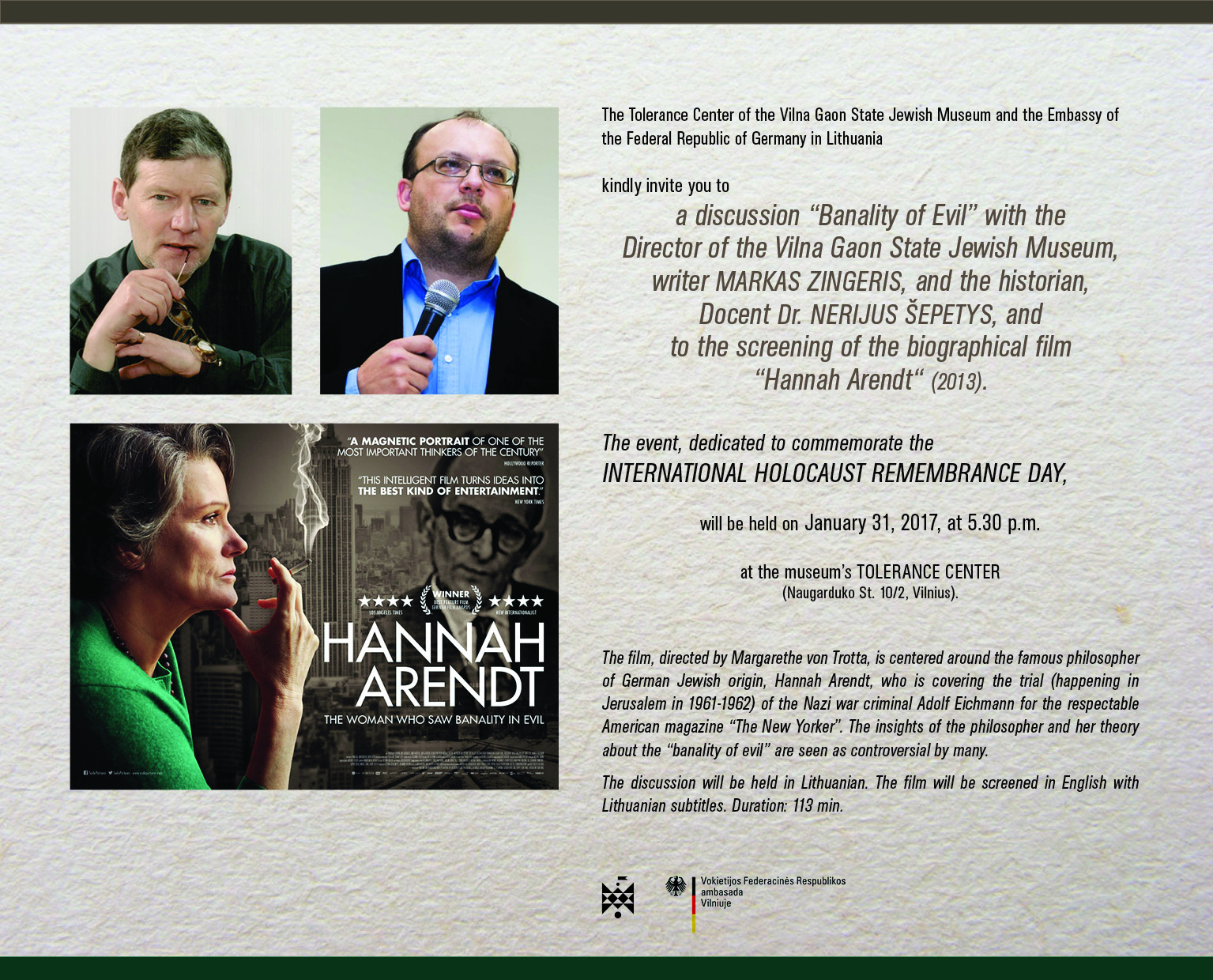
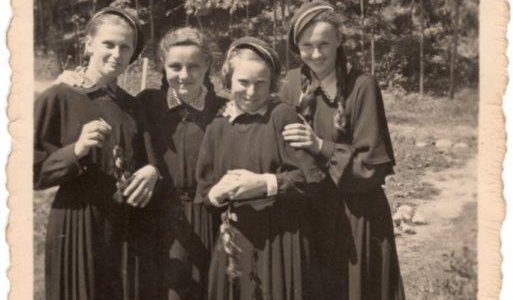
Estera Kverelytė second from left
Romualdas Beniušis writing in the newspaper Lietuvos žinios tells the story of Estera Kverelytė, a Jewish girl from Darbėnai (Drobyan or Dorbyan in Yiddish), Lithuania, who kept a diary in the months leading up to her murder at the hands of postman and policeman Vladas Jašinskas presumably in early July of 1941. Kverelytė’s diary has been lost but is known to have existed and was used in a documentary called “Nebaigtas dienoraščio puslapis” [Unfinished Page of a Diary] released by the Lithuanian Film Studio in 1964 and still available for viewing on the internet archive of Lithuanian National Radio and Television, according to the author. Beniušis is trying to locate the diary and is asking the public for help.
Full story in Lithuanian here.

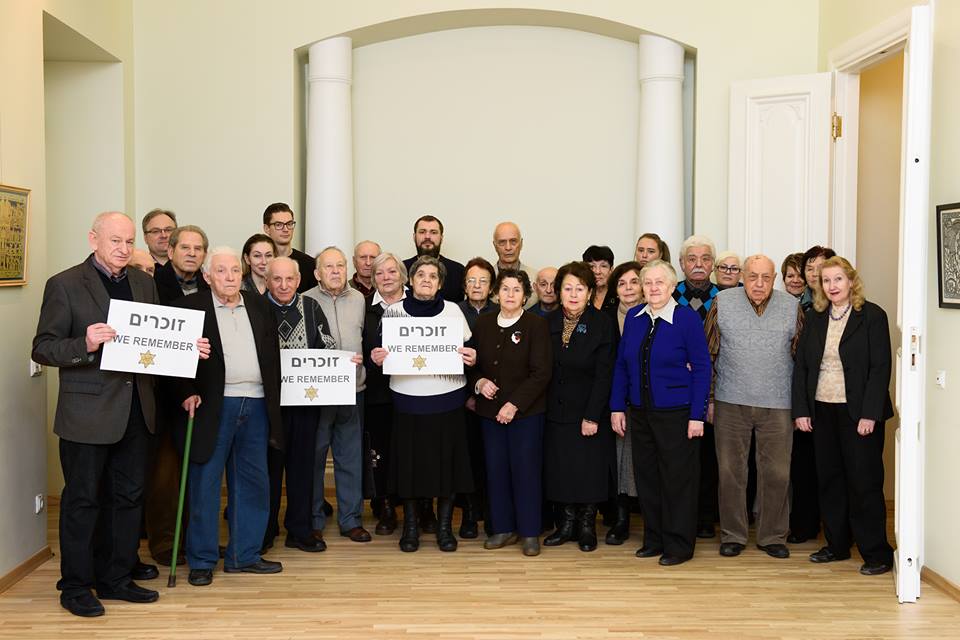
Jewish Community members including a number of Holocaust survivors
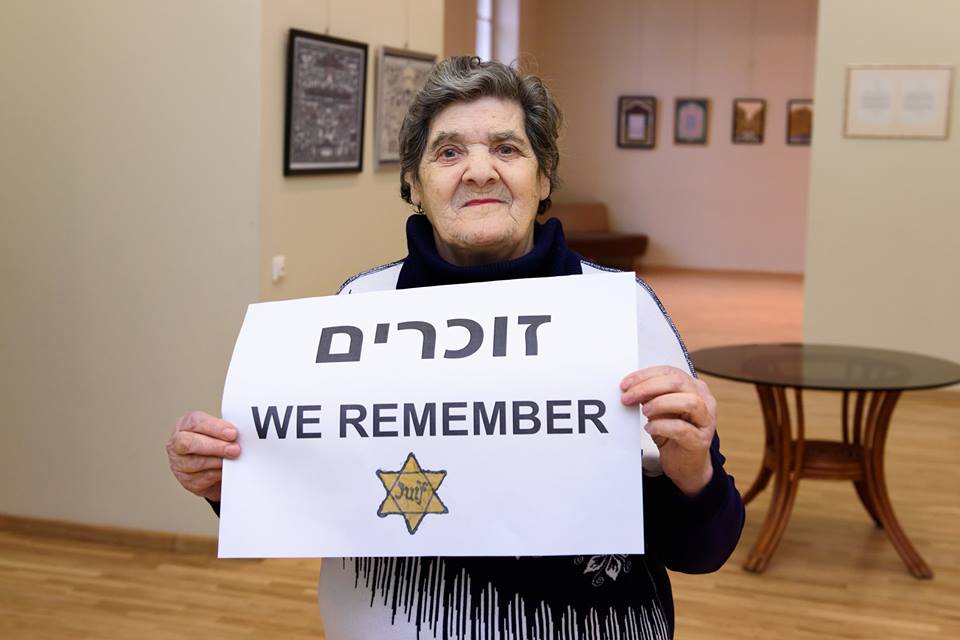
As International Holocaust Remembrance Day on January 27 draws near, the World Jewish Congress is inviting everyone to join the global campaign We Remember. Please try to make sure your Community and its leaders visit schools, churches, synagogues, youth organizations and other institutions to deliver the message. Ask your friends, students and teachers who consent to be photographed to hold homemade We Remember signs as their portraits are taken and sent directly to facebook, twitter and/or instagram, and send a link to weremember@wjc.org
Why now?
In 2017 we have to remember the Holocaust.
Because so many more of the survivors are leaving us…
Because Holocaust denial is not getting weaker,
Because genocide is still happening…
And because it is so important to educate the coming generations.
Together, we want to remind the world about all that happened.
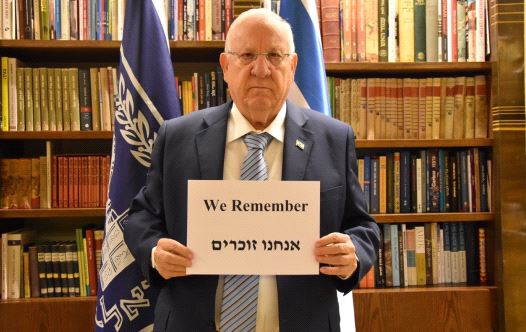 Reuven Rivlin, president of Israel
Reuven Rivlin, president of Israel
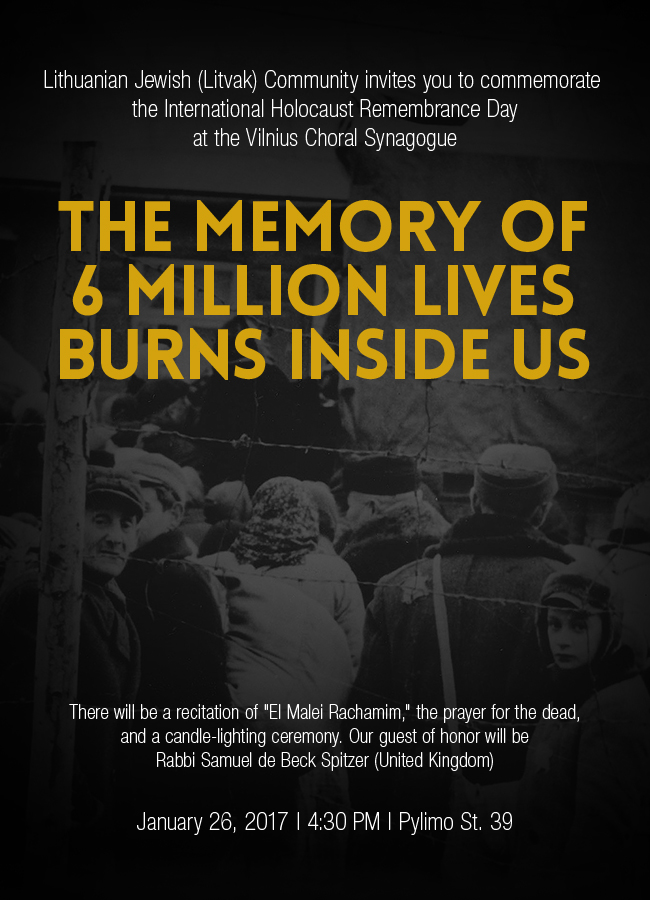

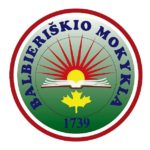
Balbieriškis Primary School, Klevų street no. 10, Balbieriškis, Lithuania
January 27, 2017
Conference program:
10:00-11:00
arrival, registration
11:00-12:00
opening, principal Stasys Valančius and International Commission executive director Ronaldas Račinskas
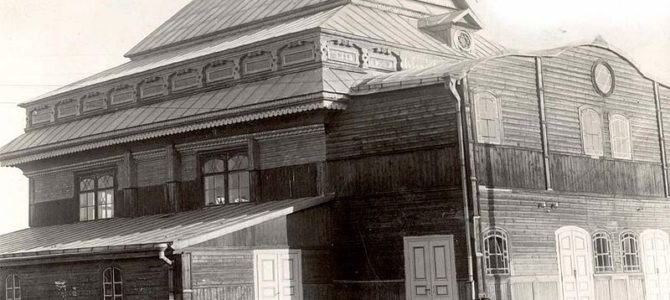
Vilkaviškis synagogue

The Lithuanian National Radio program Radijo Dokumentika aired the episode on at 11:05 A.M. on January 22. It is to be rebroadcast at 9:00 A.M. on January 24 just after the morning news program Ryto Garsai.
Feiga Koganskienė, who lived in the town in the Suvalkija region right up till World War II, says: “Vilkaviškis is only the name Vilkaviškis, it has nothing in common with the former Vilkaviškis.” When she returned to her home town after the war, the woman did not recognize it, and found none of her Jewish family or friends.
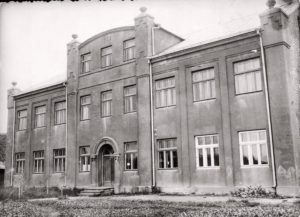
The modern Vilkaviškis Jewish Gymnasium between
the wars, now the city municipal building.
Before the war Vilkaviškis was one of the most ethnically and culturally diverse towns in the region, but now it’s perhaps the most Lithuanian town in the entire country. Today only a handful of people remember Vilkaviškis in the interwar period, and even fewer are prepared to look into the town’s Jewish history. In the Lost Traces of Vilkaviškis episode, Radijo Dokumentika reporters walk with residents for whom the Vilkaviškis of that time is not just a collection of faded facts from history.